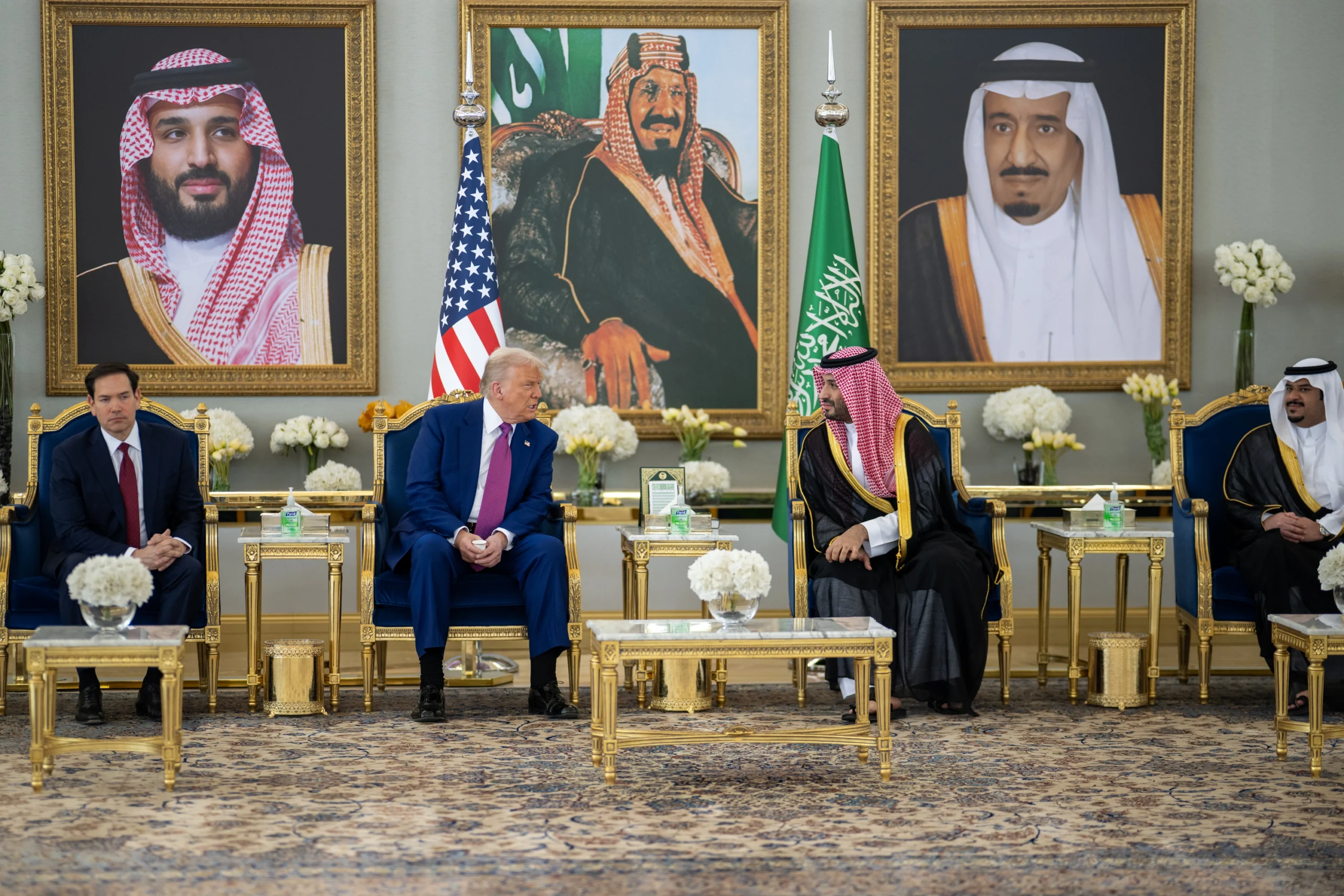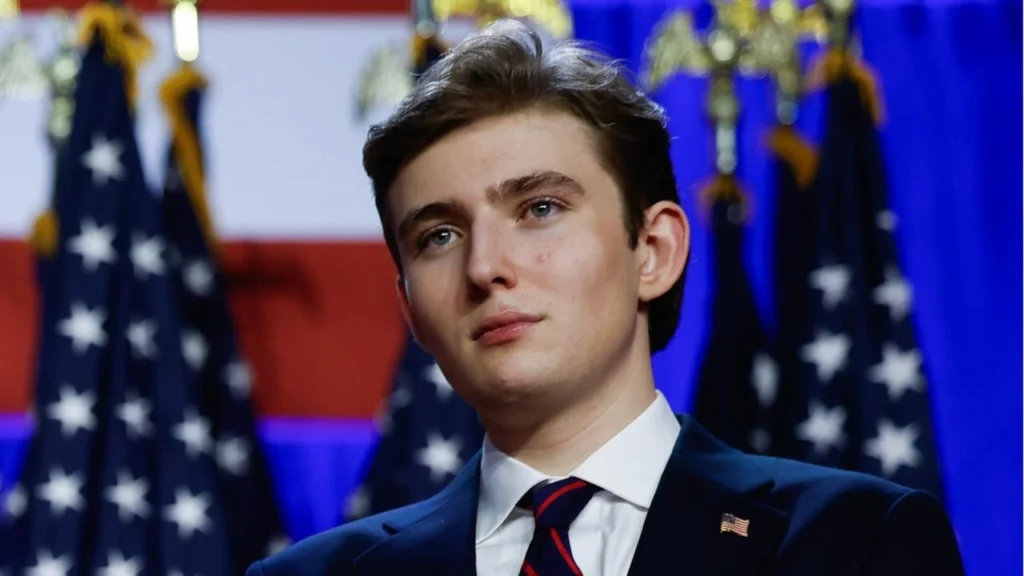TRUMP’S MIDDLE EAST INVESTMENT PUSH
HOW QATAR, SAUDI ARABIA & THE UAE ARE COMPETING TO INVEST IN THE U.S. & WHY IT MATTERS FOR BOTH SIDES
By Desk Reporter

Former President Donald Trump’s return to the international stage has been marked by a bold, economically-focused tour of the Gulf region that has already yielded commitments totaling nearly $2 trillion in investment from Qatar, Saudi Arabia, and the United Arab Emirates. Unlike traditional diplomacy laden with political symbolism, this tour was all business. The primary goal? To open the floodgates for capital from some of the world’s wealthiest sovereign wealth funds and private investors into the U.S. economy. In doing so, Trump has reignited what seems to be a silent but fierce economic rivalry among Gulf states each determined to solidify its relevance on the global stage through U.S. partnerships. The investments announced cut across industries such as defense, aviation, infrastructure, and, notably, artificial intelligence (AI), signaling a new era in Middle East-U.S. economic engagement.
Saudi Arabia, the largest and arguably most influential Gulf state, has pledged a staggering $600 billion. Part of this commitment includes a $142 billion defense agreement, as well as billions of dollars earmarked for energy and AI technologies. One of the most significant moves came through the Kingdom’s AI startup, Humain, which secured funding to acquire 18,000 AI chips from Nvidia—fueling one of the largest data centers ever planned in the region. These developments underscore the nation’s intention to use its financial muscle not just for wealth preservation, but to drive future-facing initiatives in tech and innovation. These investments align tightly with Saudi Arabia’s Vision 2030—a national roadmap aimed at diversifying the country’s economy beyond oil and creating new revenue streams, jobs, and industries.
The United Arab Emirates, never one to lag behind in matters of economic prestige, committed an additional $200 billion in investments during Trump’s tour, building on a pre-existing $1.4 trillion investment portfolio. The UAE’s ambitions are encapsulated by its plan to build the largest AI data center outside the United States, located in Abu Dhabi. This project not only showcases the UAE’s serious commitment to AI, but also its strategic vision to become a global tech hub. These moves are part of the country’s Centennial 2071 plan, a long-term agenda aimed at preparing the UAE for a post-oil future, focusing on education, innovation, and economic sustainability.
Qatar, often the dark horse in Gulf competition, announced a $500 billion economic pledge to invest in the U.S. over the next decade. This includes a $96 billion order for Boeing jets—a strategic move that not only supports American manufacturing jobs but also deepens Qatar’s ties with U.S. industries.
This commitment forms part of Qatar’s own National Vision 2030, which aspires to transform the state into an advanced society capable of sustaining its development and providing a high standard of living for its people. The substantial Boeing deal is also emblematic of Qatar’s desire to expand its presence in aviation and logistics, while maintaining its strategic alliance with Washington.


Beneath these astronomical figures lies a quieter story of regional competition. While all three nations have shared interests in diversifying their economies and expanding their geopolitical influence, each is also vying to be seen as the U.S.’s most reliable and influential partner in the region. This competition is driven by multiple factors: the need to secure favorable bilateral trade conditions, to attract U.S. technology and know-how back to their own economies, and to ensure a hedge against future geopolitical uncertainties. In essence, economic investment is being used as a diplomatic tool a way to remain indispensable to American strategic interests.
This competition is also deeply tied to each nation’s domestic priorities. For Saudi Arabia, the investments are an extension of Crown Prince Mohammed bin Salman’s broader modernization efforts. Success in the U.S. market helps to validate the Kingdom’s rebranding efforts, particularly in the face of past international criticism. The UAE, which already punches above its weight in global financial markets, sees technological leadership—particularly in AI and clean energy as central to maintaining its influence in a post-hydrocarbon world. Meanwhile, Qatar views its U.S. investments as a necessary cushion in a turbulent geopolitical environment, especially given past tensions with its neighbors and its relatively smaller population and resource base.
From the U.S. perspective, the benefits are immediate and tangible. Firstly, there is job creation. Large-scale defense deals, infrastructure projects, and manufacturing orders like Boeing’s can inject billions into local economies, providing work for thousands of American employees and supporting entire supply chains.
Secondly, the influx of capital into sectors such as AI, biotech, and renewable energy helps accelerate U.S. leadership in technologies that will define the global economy in the coming decades. The AI chip orders and data center collaborations with Gulf countries will likely be managed in partnership with American firms, further entrenching the U.S. as a global innovation leader.
Thirdly, these partnerships offer a strategic counterweight to increasing Chinese economic influence in the Middle East. By encouraging Gulf states to deepen their financial and technological ties with the United States, Washington can subtly limit China’s growing footprint in the region without direct confrontation. This economic alignment also benefits the American public in less obvious but important ways. A stronger, more diversified partnership with Gulf nations means a reduced likelihood of economic shocks linked to oil prices or regional conflicts. It also enhances the U.S.’s capacity to negotiate from a position of strength in multilateral trade forums and security alliances.
Some critics have questioned whether such deals are sustainable or simply headline-grabbing PR exercises. Yet, the scale, complexity, and sector-specific nature of these agreements suggest otherwise. These are not simple real estate purchases or luxury investments—these are infrastructure-defining projects, co-ownership of technologies, and multi-decade commercial partnerships. The Gulf’s sovereign wealth funds are known for their long-term investment horizons and risk-averse strategies. Their interest in America is not speculative; it is deeply strategic.
In summary, Trump’s recent Gulf tour marks a powerful convergence of interests. The Gulf states, with their overflowing sovereign wealth funds and urgent need to diversify their economies, have found an eager partner in the United States a nation looking for capital to supercharge its next wave of industrial and technological growth. This emerging partnership is less about traditional diplomacy and more about mutual economic transformation. The competition between Qatar, Saudi Arabia, and the UAE to invest more in the United States is not only real—it is strategic, calculated, and deeply beneficial to all parties involved. For Gulf nations, it’s about survival, modernization, and influence. For the United States, it’s about innovation, jobs, and economic strength. The outcome of this investment race could shape the economic architecture of the next decade—and possibly redefine the U.S. relationship with the Middle East in the process.


